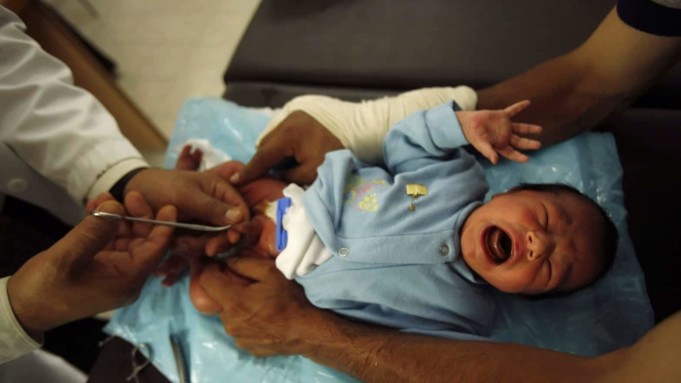When the subject of circumcision is brought up, everyone suddenly thinks about the surgical removal of the foreskin (that is the tissue covering the cap) of a baby boy’s penis.
While in some African cultures, females get circumcised, such practices are now frowned upon, leaving only make circumcision in trend. Male circumcision is an age-old practice that has its roots in religious rituals and rites.
Today, a large population of parents have their sons circumcised for both health, religious and many other reasons.
When is circumcision done?
Circumcision is usually carried out on the first or second day after a child is born. (Among the Jewish population, a child gets circumcised on the eighth day.)
The circumcision procedure becomes riskier and more complicated in older babies, young children, and men.
How is circumcision done?
The process of circumcision is not a difficult one, the foreskin is freed from the cap of the penis, and the doctor the excess foreskin is cut off. If circumcision is done in a newborn child, the entire procedure takes a total of 5 to 10 minutes.
For adult circumcision, which is now a rare happening, it takes about an hour. The circumcision generally heals between five to seven days
Is circumcision necessary?
The answer is yes, and no. The use of circumcision for health or medical reasons is a topic that has been repeatedly debated.
The American Academy of Pediatrics (AAP) discovered that the health benefits of circumcision for newborn boys outweigh the risks, however, the benefits are not enough to fully recommend a universal circumcision for newborn boys.
The procedure of circumcision may be recommended in men and older boys as a way to treat phimosis (phimosis is the inability to retract the foreskin) or as a way to treat a penis infection.
Parents are advised to discuss with their doctor about the risks and benefits of the circumcision procedure before you make a decision that has to do with the circumcision of a male child.
Asides health, other factors, like your religion, culture, and personal preference, will play major roles in your decision making.
What are the benefits?
There is some proof that suggests that circumcision comes with great health benefits, such as:
- Reduced risk of urinary tract infections.
- Reduced risk of HIV and some other sexually transmitted diseases in men.
- Protection against the risk of penile cancer and cervical cancer in sex partners of the female gender.
- Prevention of balanitis which is an inflammation of the glans and the prevention of balanoposthitis which is the inflammation of the foreskin and glans.
- Prevention of phimosis which is a condition characterized by the inability to retract the foreskin and a condition called paraphimosis which is the inability to return the foreskin to its original position.
- For hygiene, circumcision is also an easier way to keep the end of a boy’s penis clean.
What are the risks?
Circumcision is a mini surgical procedure, and just like with any surgical procedure, circumcision comes with its own possible risks.
However, the good news is that the risk is very low. Some of the problems associated with circumcision are:
- Pain
- Risk of infection at the site of the circumcision
- Risk of bleeding at the site of the circumcision
- Irritation of the glans
- An Increased risk of meatitis which is a condition characterized by the inflammation of the opening of the penis.
- Risk of injury to the penis
Despite the risks, parents still feel the need to get their sons circumcised. However, it is important to note that circumcision doesn’t affect the proper functioning of the penis, neither does is add to its abilities.
Please do not hesitate to leave a comment below, if you’d like to share your thoughts with us.












